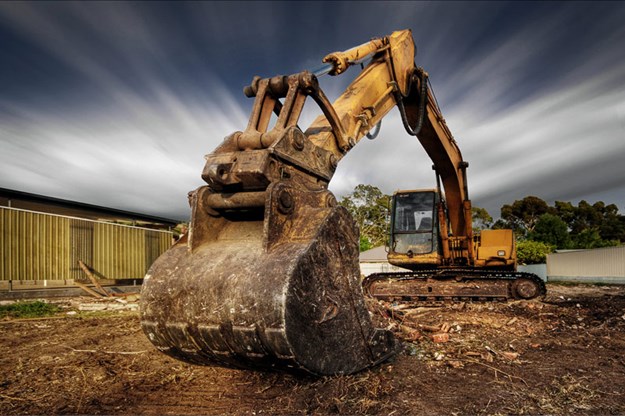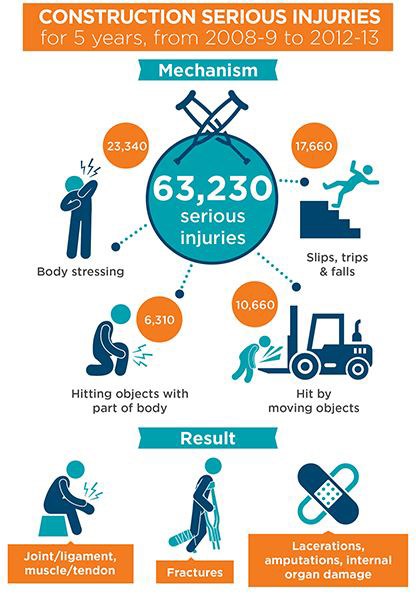Wherever you look round the world construction and mining have always been two of the most dangerous industries in which to work. Ricky French provides some health and safety pointers to help keep you safe.
 |
One of the most famous photographs in the world – Lunch atop a skyscraper – shows a group of workers causally eating their lunch straddling a girder that formed the steelwork of 30 Rockefeller Plaza, 69 storeys above the pavement in Manhattan.
Although the photo was staged it still says a lot about the evolving nature of attitudes towards safety. More recent photos during the 1980s and even into the 1990s depict construction workers getting about shirtless and helmetless; something unthinkable now in the era of site inductions and red, green, blue and orange cards.
There’s no doubt unions have played a big part in promoting safety and improving the chances of workers returning home to their families each night, while also ensuring employees are well compensated for putting their lives on the line. But business owners also deserve accolades for recognising that a safe worksite is a productive worksite. Driving down the lost time injury frequency rate means more jobs completed on time and to budget, not to mention that fact that no boss wants any worker to get hurt at work.
There is, however, much work still to do. The Australian Work Health and Strategy 2012-2022 identified the construction industry as a national priority to reduce the number and rate of fatalities and serious claims.
Worker fatalities are still high, at 3.0 per 100,000 workers. Over the last five years the construction industry has rated third in both number of fatalities and number of compensation claims. The good news is that things have improved even over the last 10 years, when the fatality rate was 4.8 per 100,000.
Jobs involving earthmoving or mining equipment remain especially dangerous. Taken as a sub-industry, heavy and civil engineering construction recorded the highest fatality rate (5.7 per 100,000) and highest serious claim frequency rate (13.4 claims per million hours worked), making up nearly one third of all claims. 24 workers in mining and construction have been killed so far this year.
 |
|
A total of 63,230 serious injuries were reported in the five years from 2008–9 to 2012–13
|
WATCH THE WHEELS
The issue of vehicle safety has once again come to the fore, with the main causes of fatalities in heavy and civil engineering construction being either hit by a moving object or being involved in a vehicle incident. Across Australia as a whole, vehicle incidents still make up around one third of all workplace fatalities.
One current area of concern for the construction industry is the danger posed by vehicle loading cranes (VLCs). Workplace Health and Safety Queensland are currently in the middle of a blitz on VLCs, in the wake of three deaths. With assistance from the National Heavy Vehicle Regulator a state-specific inspection requirement will be introduced in Queensland to ensure the state’s 10,000-plus VLCs are safe and free of defects.
Powered mobile plant continues to expose workers to a high risk of injury or death due to their weight, power and moving parts. Typically, incidents occur as a result of either the plant overturning, objects falling on the operator, the operator being ejected, the plant colliding with a person or object, or because of mechanical failure.
WorkCover Queensland notes that people working around mobile plant may also be exposed to “excessive noise and vibration, hazardous fumes, fall hazards while accessing or evacuating the plant, and musculoskeletal hazards.”
 |
On the topic of state regulation, just last month the NSW government launched an initiative to reduce work-related deaths by 30 per cent, as well as injuries and illnesses by 50 per cent within five years. This Work Health and Safety Roadmap for NSW 2022 policy announcement coincided with a $3.2 million workplace safety awareness campaign.
“With NSW in the middle of the biggest road and rail construction boom in the country’s history we need to continue to focus on keeping our workers safe,” NSW government minister for better regulation, Matt Kean, explains.
You would think that the ever-increasing number and scale of heavy construction projects coincides with higher incidences of construction worker injury, but the statistics appear to show that with increased legal safety requirements and vigilance onsite this does not have to be so.
In the 14 years from 2003 to 2016, 3,414 workers lost their lives in work-related incidents. In 2016, there were 182 worker fatalities, equating to a fatality rate of 1.5 fatalities per 100,000 workers – the lowest rate since the series began in 2003.
The national WH&S landscape is changing and high risk industries are actually leading the way for other industries in Australia. Chain of Responsibility laws have been tightened this year so that supervisors, middle-managers and others in your businesses’ supply chain can now be prosecuted if they are found to have encouraged a driver to work while fatigued, to speed or to drive in breach of load or dimension requirements.
KEEP READING


.jpg)